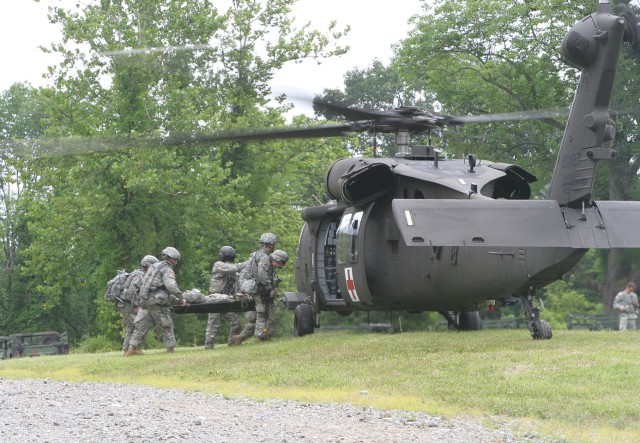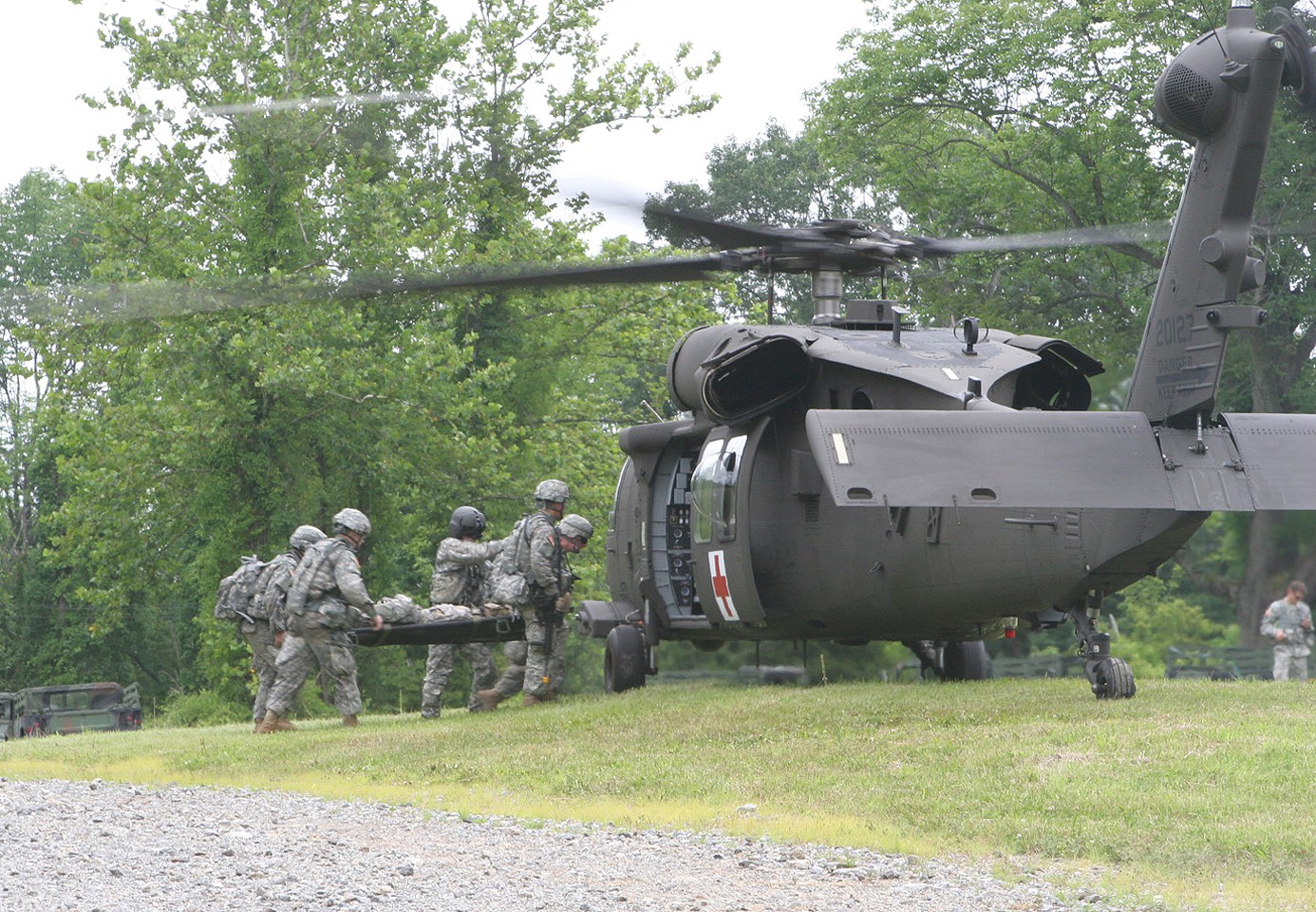The second iteration of this year's high-intensity Cadet Leader Development Training was full of the unexpected, but maintained a constant from prior years of summer training-the interaction of cadets with active duty commissioned and noncommissioned officers.
In a change of curriculum from last year's summer training, the upper class holds the essential responsibility of training the new cadets as well as the rising yearlings and cows.
The firsties, however, are still relying on the direct guidance of seasoned leaders to develop their own leadership skills and styles during CLDT. They work with trainer teams of two-to-three officers and some NCOs as well to learn about tactical team management and decision-making.
"Our role here is to establish leadership capabilities and decision-making process, not necessarily how tactical they are but if they're making decisions and what type of decisions they are making," Staff Sgt. Joseph Bayes, communications platoon sergeant with Headquarters and Headquarters Company, 1st Battalion, 502nd Parachute Infantry Regiment, 2nd Brigade Combat Team, 101st Airborne Division, said.
During CLDT, firsties learn how to operate as squad and platoon leaders as well as platoon sergeants and company commanders over the course of six missions-combat outpost, mounted patrol, military operations on urban terrain attack (MOUT), search and attack, platoon attack and cordon and search.
During these missions, the cadets learn how to plan out the mission, but, more importantly, they learn how to adapt and change their plans when the situation on the ground changes.
For instance, one scenario that started as a routine cordon-and-knock mission quickly turned into volatile hostage situation. The leaders on the ground had to move and act quickly in order to neutralize the threat while minimizing military and civilian casualties.
"They adapted and knew they were going in with insurgents being here," Bayes, the Sabetha, Kan., native said. "I think they adapted well with the sudden change."
The training helps cadets develop clear communication with subordinates, as well as teaching "grace under pressure" and teamwork. They do this while working in simulated combat environments with the kinds of stressors they can anticipate in the operational Army.
When the teams first received the cadets, they taught them about pre-combat checks and inspections, and how to load a Blackhawk helicopter. The Task Force Strike Soldiers also shared lessons learned from their recent deployment to Iraq with the fledging leaders.
"Coming from our last deployment, which ended in September, I think they see us as (full of knowledge)," Bayes said. "We have experience with everything we're trying to teach them through (past) deployments."
Firstie Brandon Wright, of 2nd Company, CLDT, was administrative officer on cadet leadership detail when he observed his classmates' training, but eagerly anticipated his turn at CLDT.
"I think most (cadets) have a good feel for what's going on," the San Diego native said. "Of course, this is a learning process for everyone. We're here to make mistakes, so down the road we're much better at what we do."
The training preserves the tradition of cadets interacting with active duty Soldiers over the summer. Despite an overall reduced-size task force, the cadets were able to learn from officers and NCOs how the platoon leader fits in the warfighting team.
"They don't really know how to react to us when they first see us," Bayes said. "It's good for them to come and see the NCO side of what we're trying to do and what our roles are. They learn a lot from that."
"(The firsties) get a chance to observe some of the roles their future NCOs are going to be in," Wright said. "So they have a good idea of what their job description is and what they need to know to correctly utilize those Soldiers when they become platoon leaders."
From team leader to company commander, CLDT exposes the firsties to the full spectrum of tactical leadership. Through interaction with field and junior grade officers as well as NCO counterparts, they learn how to perform different platoon leader tasks.
"It's good to teach these young cadets what they're going to be facing when they become platoon leaders," Bayes said, "and put them on a different level than they have been before they get to their unit."






Social Sharing